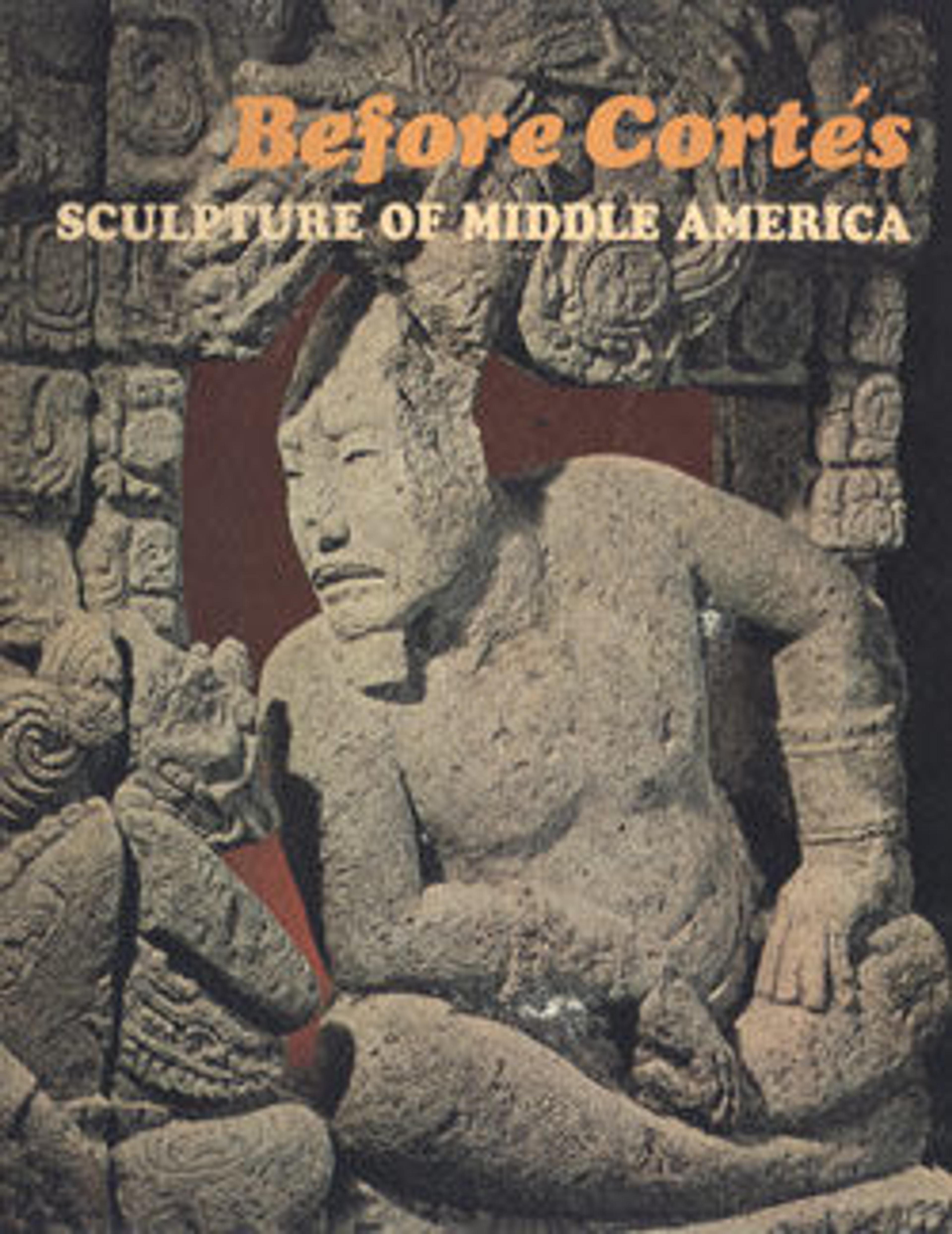Closed Yoke
In Mesoamerican art, ballplayers are identified by the thick belt worn around the waist. Referred to as a yoke, the name is derived from the similarity of the shape to that of the equipment used to manage draft animals. Although a tradition of open-ended, elaborately carved stone yoke sculptures endured in parts of Mesoamerica for centuries, the earliest yokes are believed to be those of closed shape and smooth polished surface with no relief ornamentation. A flattened raised ridge surrounding the central opening of this yoke is its only surface elaboration. Later yokes are carved with imagery relating to sacrifice. Figures identified as earth monsters, for whom the sacrifices may have been intended, are among them. The shape of this yoke, with a void in the center, suggest a connection to the theme by its resemblance to a cave opening, as apertures in the earth were regarded as portals to the realm of the underworld.
Resources and Additional Reading
Ceremonial Sculpture of Veracruz. New York: Long Island University, 1987.
Earley, Caitlin C. "Stone Sculpture and Ritual Impersonation in Classic Veracruz." Metropolitan Museum Journal (2019), pp. 8-25, fig. 5.
Ekholm, Gordon F. "The Probable Use of Mexican Stone Yokes." American Anthropologist 48:4, pp. 593-606, 1946.
Koontz, Rex. Lightning Gods and Feathered Serpents: The Public Sculpture of El Tajín. Austin: University of Texas Press, 2009.
Leyenaar, Ted J.J. Ulama, Jeu de Balle des Olmeques aux Azteques - Ballgame, from the Olmecs to the Aztecs. Lausanne: Musée Olympique, 1997.
Proskouriakoff, Tatiana. "Classic Art of Central Veracruz. In Handbook of the Middle American Indians, edited by Gordon F. Ekholm and Ignacio Bernal, vol. 11, pp. 558-571. Austin: University of Texas Press, 1971.
Reents-Budet, Dorie (ED.) Painting the Maya Universe: Royal Ceramics of the Classic Period. Durham, N.C.: Duke University Press, 1994.
Scott, John F. "Dressed to Kill: Stone Regalia of the Mesoamerican Ballgame." In The Sport of Life and Death, The Mesoamerican Ballgame, edited by E. Michael Whittington, pp. 50-63. New York: Thames and Hudson, 2001.
Shook, Edwin M. and Elayne Marquis. Secrets in Stone: Yokes, Hachas and Palmas from Southern Mesoamerica. Philadelphia: American Philosophical Society, 1996.
Thompson, J. Eric. "Yokes or Ballgame Belts?" American Antiquity 6:4, pp. 320-326, 1941.
Whittington, E. Michael, ed. The Sport of Life and Death: The Mesoamerican Ballgame. New York: Thames and Hudson, 2001.
Resources and Additional Reading
Ceremonial Sculpture of Veracruz. New York: Long Island University, 1987.
Earley, Caitlin C. "Stone Sculpture and Ritual Impersonation in Classic Veracruz." Metropolitan Museum Journal (2019), pp. 8-25, fig. 5.
Ekholm, Gordon F. "The Probable Use of Mexican Stone Yokes." American Anthropologist 48:4, pp. 593-606, 1946.
Koontz, Rex. Lightning Gods and Feathered Serpents: The Public Sculpture of El Tajín. Austin: University of Texas Press, 2009.
Leyenaar, Ted J.J. Ulama, Jeu de Balle des Olmeques aux Azteques - Ballgame, from the Olmecs to the Aztecs. Lausanne: Musée Olympique, 1997.
Proskouriakoff, Tatiana. "Classic Art of Central Veracruz. In Handbook of the Middle American Indians, edited by Gordon F. Ekholm and Ignacio Bernal, vol. 11, pp. 558-571. Austin: University of Texas Press, 1971.
Reents-Budet, Dorie (ED.) Painting the Maya Universe: Royal Ceramics of the Classic Period. Durham, N.C.: Duke University Press, 1994.
Scott, John F. "Dressed to Kill: Stone Regalia of the Mesoamerican Ballgame." In The Sport of Life and Death, The Mesoamerican Ballgame, edited by E. Michael Whittington, pp. 50-63. New York: Thames and Hudson, 2001.
Shook, Edwin M. and Elayne Marquis. Secrets in Stone: Yokes, Hachas and Palmas from Southern Mesoamerica. Philadelphia: American Philosophical Society, 1996.
Thompson, J. Eric. "Yokes or Ballgame Belts?" American Antiquity 6:4, pp. 320-326, 1941.
Whittington, E. Michael, ed. The Sport of Life and Death: The Mesoamerican Ballgame. New York: Thames and Hudson, 2001.
Artwork Details
- Title: Closed Yoke
- Date: 4th–7th century
- Geography: Mexico, Mesoamerica, Veracruz
- Culture: Veracruz
- Medium: Volcanic rhyolitic tuff
- Dimensions: H. 20 1/2 × W. 16 1/2 × D. 4 in. (52.1 × 41.9 × 10.2 cm)
- Classification: Stone-Sculpture
- Credit Line: Gift of Mrs. Ernest Brummer, in memory of Ernest Brummer, 1969
- Object Number: 69.237
- Curatorial Department: The Michael C. Rockefeller Wing
More Artwork
Research Resources
The Met provides unparalleled resources for research and welcomes an international community of students and scholars. The Met's Open Access API is where creators and researchers can connect to the The Met collection. Open Access data and public domain images are available for unrestricted commercial and noncommercial use without permission or fee.
To request images under copyright and other restrictions, please use this Image Request form.
Feedback
We continue to research and examine historical and cultural context for objects in The Met collection. If you have comments or questions about this object record, please contact us using the form below. The Museum looks forward to receiving your comments.
